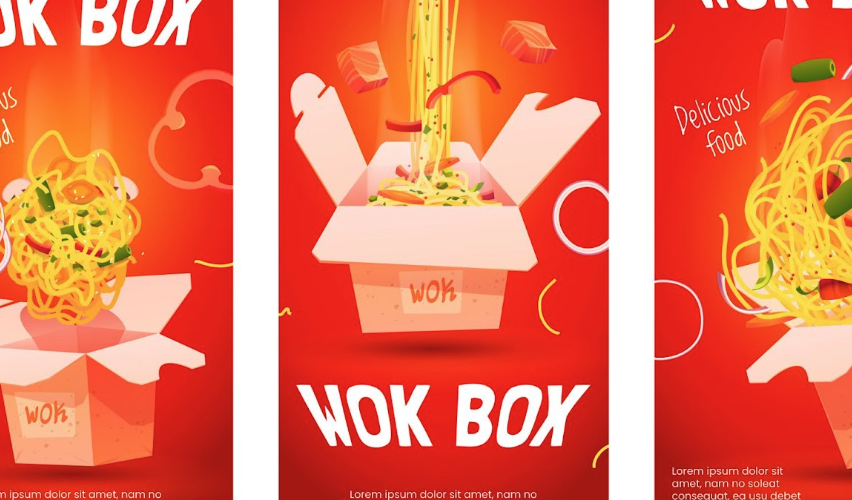Introduction
Freshness is the baseline of any good noodle. Whether you are selling artisanal pasta or mass-market ramen, the package is not just a wrapper. It protects the product, preserves texture, and keeps flavor intact from the moment the noodles leave the factory until they reach the customer’s bowl. Custom noodle packaging does that work. It controls moisture, prevents breakage, and gives retailers and consumers confidence that the product will perform as promised.
Why freshness matters for noodles
Noodles are surprisingly sensitive. Dried pasta can absorb humidity and become soft or clumpy. Instant noodles can pick up odors and off-flavors if the barrier is weak. Fresh or refrigerated noodles are even more vulnerable because they carry moisture and need reliable sealing. That’s where custom noodle packaging matters: it creates a controlled micro-environment that minimizes oxygen, moisture, and physical stress.
If you want customers to trust your brand, you must deliver a consistent texture and cooking result. Packaging that fails to protect the product means wasted inventory, higher returns, and lost credibility.
Barrier performance: keeping unwanted elements out
The first job of good noodle packaging is to keep the bad stuff out. Moisture and oxygen are the main enemies. Custom noodle packaging uses multilayer films, foil laminates, or coated papers to limit oxygen transmission and water vapor ingress. For products that need display, a small window can be incorporated without compromising the overall barrier.
What matters here is measurable performance. Oxygen transmission rate and water vapor transmission rate are technical specs, but they translate into real shelf life. When you design custom noodle packaging, don’t guess, ask for barrier data and test the package in conditions that mimic your distribution path.
Physical protection: preventing breakage and mess
Noodles, especially long strands and delicate types like rice or egg noodles, can break during packing and shipping. The right structure protects against crushing and abrasion. Quad-seal bags add rigidity and reduce movement inside the pack. Pillow bags are cost effective for bulk shipments but need careful filling procedures and protective shipping cartons. Stand-up pouches combine shelf presence with enough strength for retail handling.
Custom noodle packaging should match the noodle type. Long pasta benefits from a shape and reinforcement that keeps strands aligned. Thin, fragile noodles need padding or inner wraps to avoid crumbling. Think about how the product will be handled after packing, not only during production but during transport and in-store stocking.
Seals and closures: the weak link you cannot ignore
A high-performance film is useless if the seal fails. Heat seals, bar seals, and multi-step closure systems must be chosen and validated for your process. Resealable zippers help consumers keep leftovers fresh, but the zipper itself must seal reliably every time. Tamper-evident seals give customers confidence that the product has not been opened before purchase.
Custom noodle packaging requires ongoing quality checks at the sealing station. Do not skip burst testing, peel testing, and real-world shipping trials. Seals are where most packaging failure claims begin.
Design that preserves and sells
Packaging must protect and it must sell. Good custom noodle packaging combines technical performance with clear labeling and attractive graphics. Windows let shoppers see the product and confirm quality. High-resolution printing communicates premium positioning. But these design elements cannot interfere with barrier function.
Labeling should also include practical storage instructions. If your noodles require refrigeration after opening or need to be kept in a cool dry place, put that information where a shopper and a consumer both see it. This reduces misuse and increases perceived value when customers get the result they expect.
Sustainability with protection in mind
Consumers increasingly care about sustainability, but eco claims are only valuable when they do not compromise product integrity. Recyclable mono-material films and PCR content now exist with reasonable barrier properties. Compostable films are improving, but they must be tested for the specific product and distribution path.
When you move to greener custom noodle packaging, validate performance. The last thing you want is to trade a sustainability win for rancid or soggy noodles. Design the package so it performs first, then explore greener materials that meet those requirements.
Operational considerations: scale and consistency
Custom noodle packaging has to fit your production line capabilities. Material roll widths, print registration, and sealing equipment all affect speed and yield. If you scale from small artisan batches to larger runs, ensure the chosen structure and materials can be run consistently at higher speeds without increasing waste.
Also account for storage and palletization. Packages that nest or stack cleanly reduce shipping costs and protect product better in transit.
Testing and validation: the proof is in the package
Do pre-shipment trials. Mimic the transit conditions your noodles will face: temperature swings, humidity changes, vibration, and stacking pressure. Test product quality after simulated shipping and after typical consumer handling. Use this data to refine barrier specs, seal strength, and cushioning.
Testing turns assumptions into measurable outcomes and reduces costly recalls.
Conclusion
Custom noodle packaging is the unsung hero that keeps noodles fresh from factory to fork. It combines barrier science, mechanical protection, and practical design to preserve texture and flavor while making the product attractive on shelf. Don’t treat packaging as an afterthought. If you want consistent cooking results and customer trust, invest in packaging that is engineered for your noodle type, validated under real conditions, and designed to sell. Get those basics right and your noodles will arrive ready to perform every time.

















Add comment